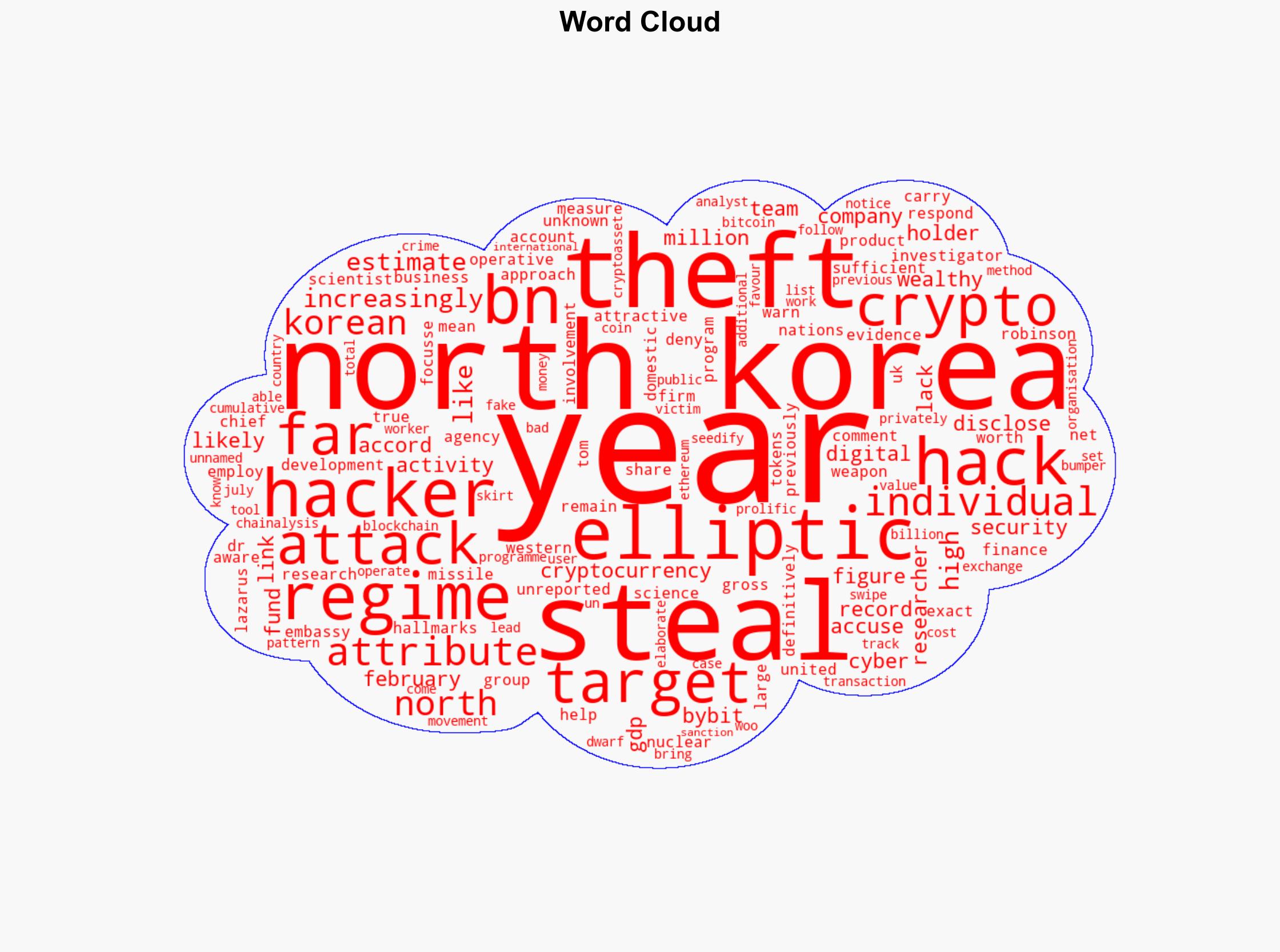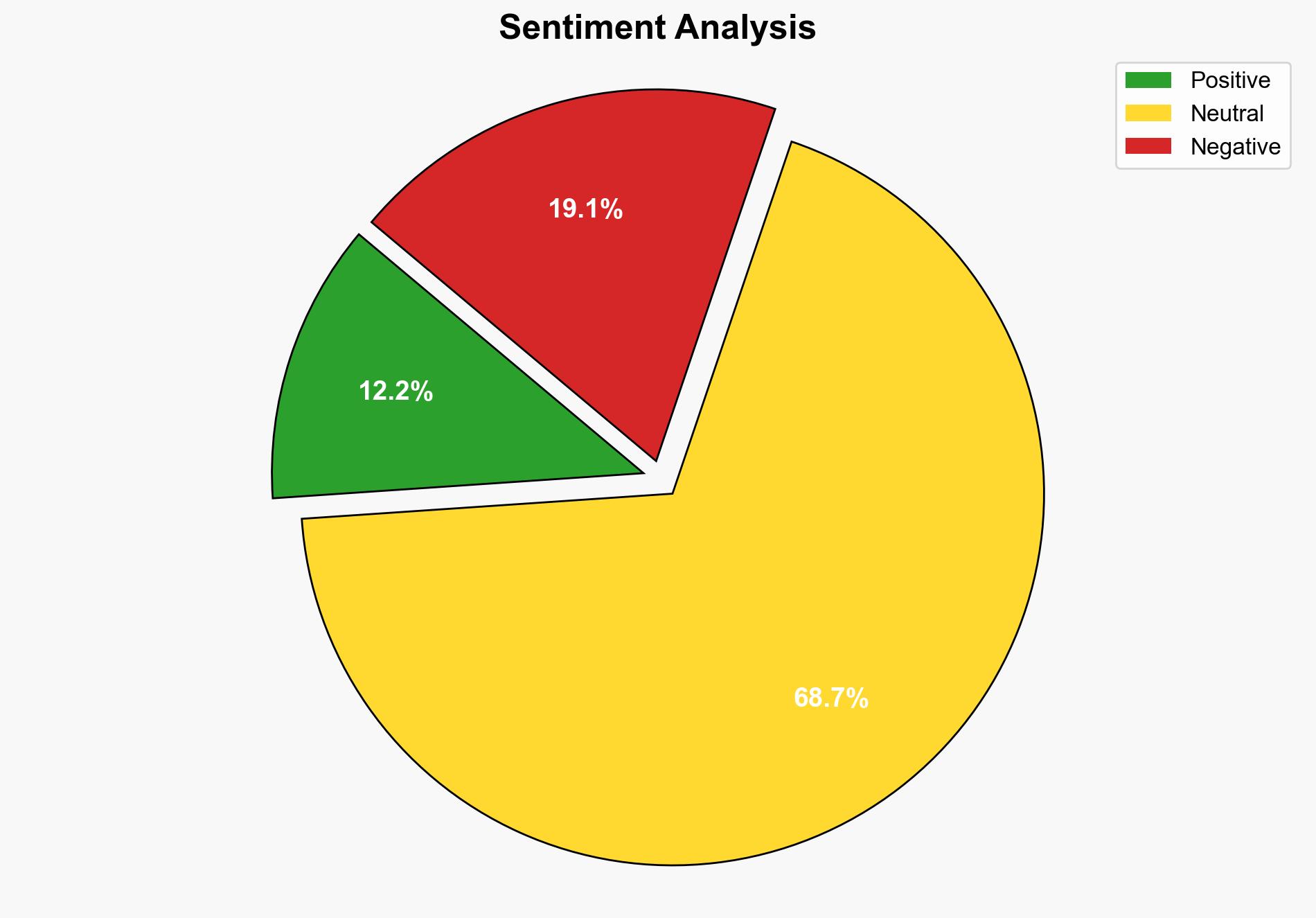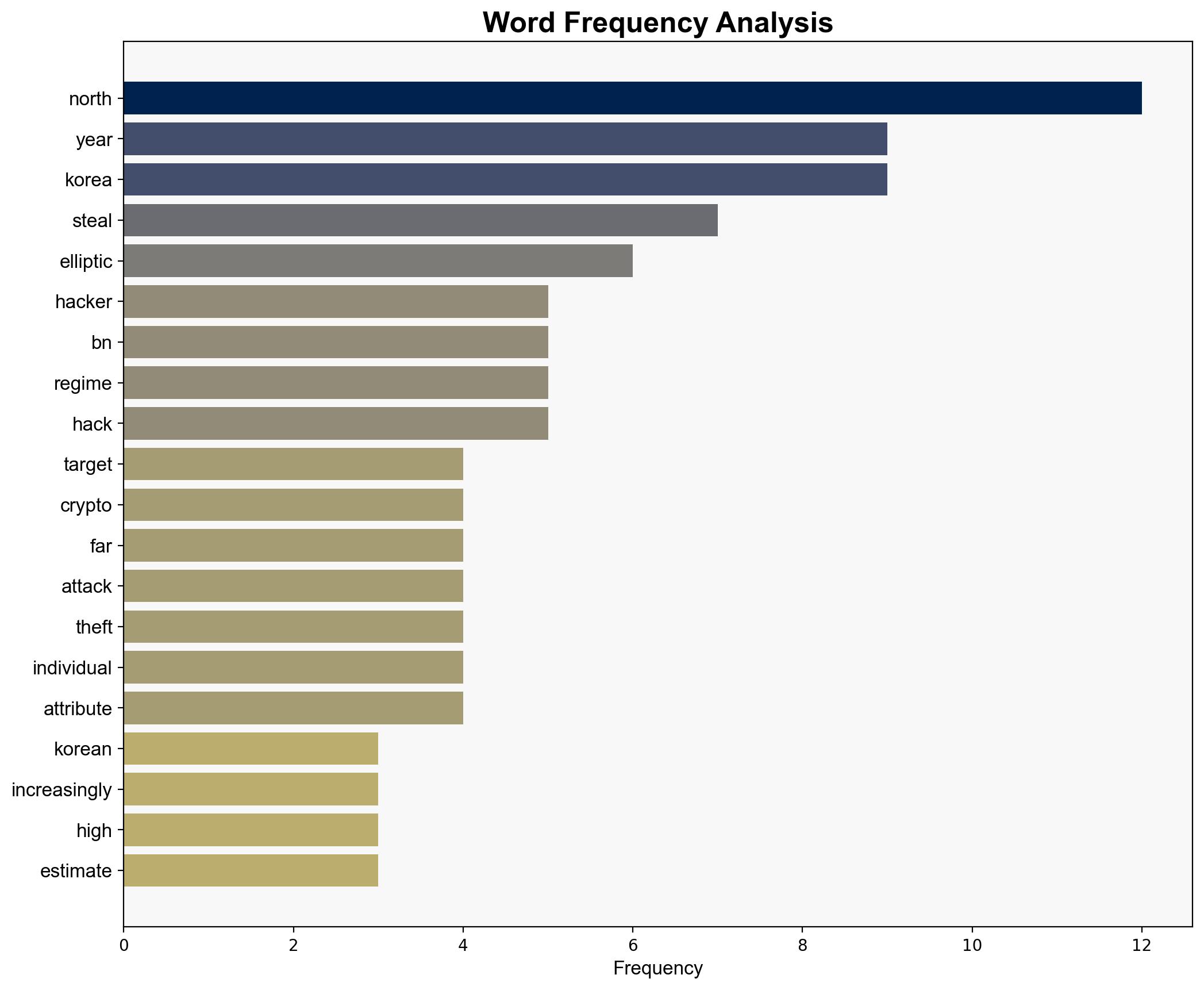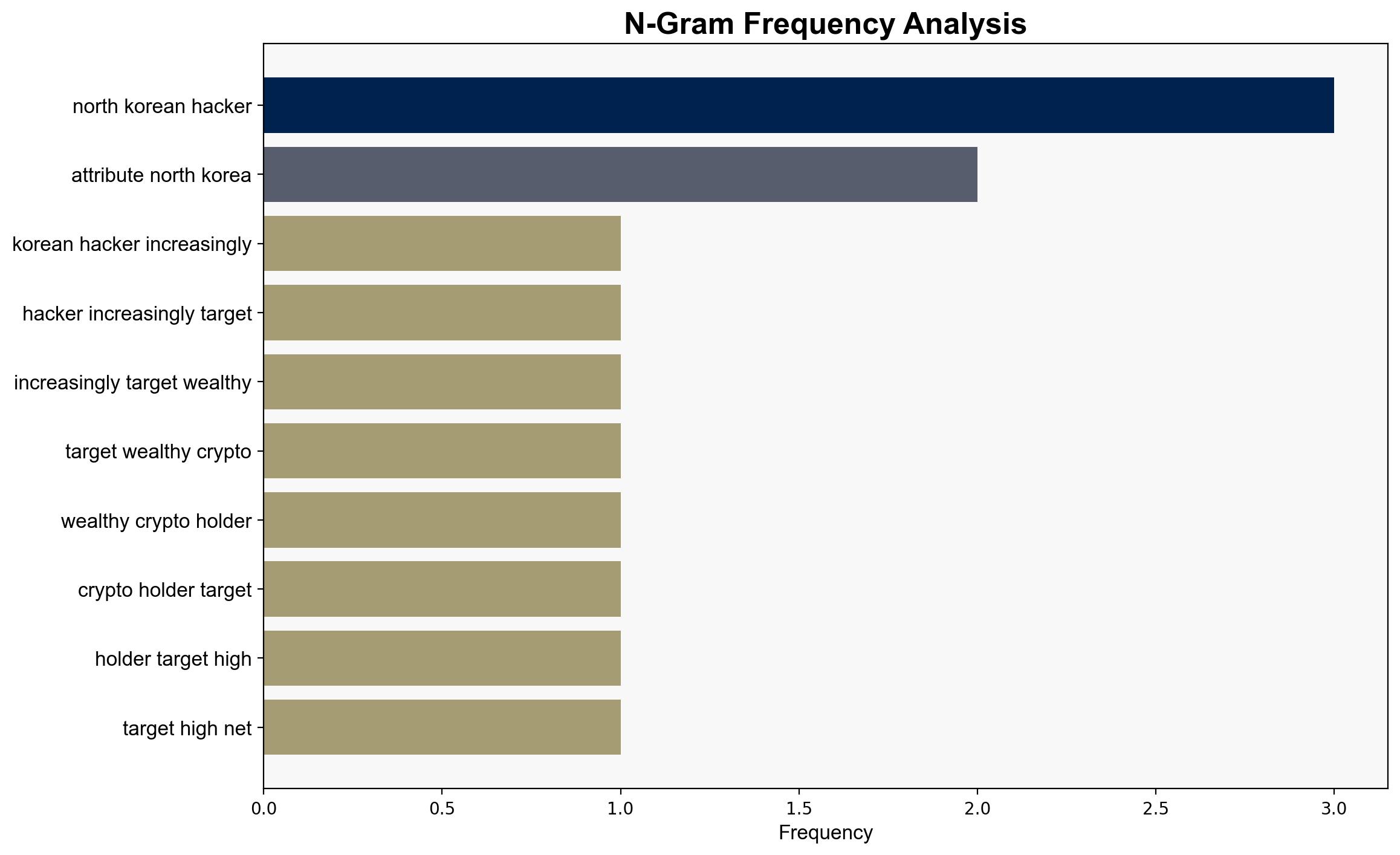North Korean hackers stealing record sums researchers say – BBC News
Published on: 2025-10-07
Intelligence Report: North Korean hackers stealing record sums researchers say – BBC News
1. BLUF (Bottom Line Up Front)
North Korean hackers are reportedly stealing significant sums from cryptocurrency holders, potentially funding the country’s nuclear and missile programs. The most supported hypothesis is that these cyber activities are state-sponsored efforts to circumvent international sanctions. Confidence level: Moderate. Recommended action: Enhance international cybersecurity collaboration and impose stricter sanctions on cryptocurrency exchanges linked to North Korea.
2. Competing Hypotheses
1. **State-Sponsored Cyber Operations**: North Korean hackers, including groups like the Lazarus Group, are conducting state-sponsored cyber operations to steal cryptocurrency, which is then used to fund the regime’s nuclear and missile programs. This hypothesis is supported by the scale of thefts and the pattern of attacks aligning with North Korean interests.
2. **Independent Cybercriminal Activity**: These cyber activities are carried out by independent North Korean hackers or groups for personal gain, with no direct state involvement. This hypothesis considers the possibility of rogue elements operating within or outside the country, exploiting weak security measures for financial gain.
3. Key Assumptions and Red Flags
– **Assumptions**: The first hypothesis assumes a direct link between the stolen funds and North Korean state objectives. The second hypothesis assumes the presence of independent actors within North Korea capable of executing complex cyber operations.
– **Red Flags**: Lack of direct evidence linking specific attacks to North Korean state directives. Potential bias in attributing all sophisticated cyber attacks to state actors without considering independent criminal motivations.
– **Blind Spots**: Limited visibility into North Korea’s internal cyber operations and the potential underreporting of cyber thefts due to victims’ reluctance to disclose breaches.
4. Implications and Strategic Risks
– **Economic Implications**: Continued success in these operations could bolster North Korea’s financial resources, undermining international sanctions.
– **Cybersecurity Risks**: Increased targeting of cryptocurrency holders highlights vulnerabilities in digital asset security, necessitating improved protective measures.
– **Geopolitical Risks**: Escalation of cyber activities could lead to heightened tensions between North Korea and affected countries, potentially provoking retaliatory measures.
– **Psychological Impact**: Fear of cyber theft may deter investment in cryptocurrency, affecting market stability.
5. Recommendations and Outlook
- Enhance international cooperation on cybersecurity, focusing on intelligence sharing and coordinated responses to cyber threats.
- Implement stricter regulatory measures for cryptocurrency exchanges to prevent misuse by state or non-state actors.
- Best-case scenario: Successful international collaboration reduces the frequency and impact of cyber thefts.
- Worst-case scenario: Increased cyber activities lead to significant financial losses and geopolitical tensions.
- Most likely scenario: Continued cyber threats with gradual improvements in defensive measures and international cooperation.
6. Key Individuals and Entities
– **Tom Robinson**: Chief Scientist at Elliptic, providing analysis on the patterns and methods of North Korean cyber activities.
– **Lazarus Group**: A prominent hacking group allegedly linked to North Korean state-sponsored cyber operations.
7. Thematic Tags
national security threats, cybersecurity, counter-terrorism, regional focus




